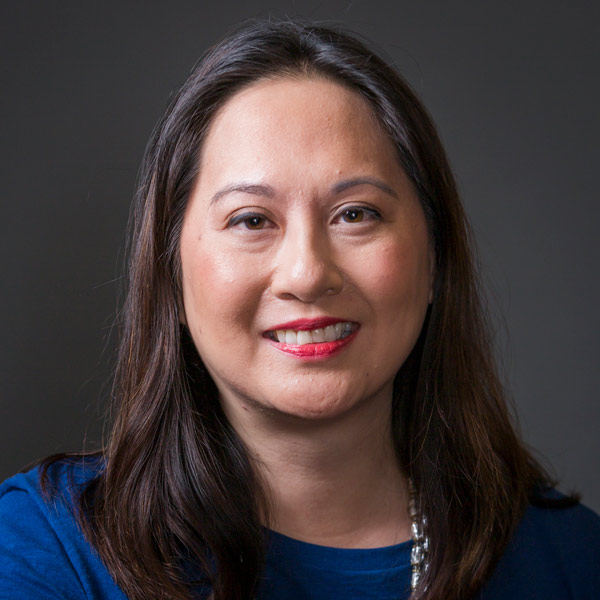Christine Lee
Research | Biography | Education | Publications | Courses Taught

Office Hours
By appointment
Research Interests
I am interested in how individual identity is formed and maintained within society. I study human skeletal remains to develop a narrative of their lives. I am looking for community members who were traditionally left out of historical records, such as women, ethnic minorities, and criminals.
My research has covered population history and migration, identity formation (ethnic and gender), origins and history of infectious disease, body modification (dental ablation and foot binding), deviant burial customs, women warriors, sports injuries, and criminal punishments.
I specialize in bioarchaeological methods including mortuary analysis, paleopathology, dental anthropology, nonmetric traits, and developmental defects.
I presently have ongoing field work in Egypt and Mongolia.
Biography
I am a biological anthropologist and bioarchaeologist. I completed my B.A. in archaeology at the University of Texas, Austin, M.A. in bioarchaeology, museum certification, and Ph.D. in anthropology at Arizona State University. I had two academic appointments in China at the Center for Frontier Archaeology, Jilin University (Changchun) and the Institute for Vertebrate Paleontology and Paleoanthropology (Beijing). I joined the University of Mississippi in 2022. I have taught at the University of Arkansas, Fayetteville, University of South Florida, and California State University, Los Angeles. I have experience in museum curation and exhibition (Heard Museum, Houston Museum of Natural Science) and on archaeological collections and excavations (Italy, China, Egypt, Mongolia, England, Texas).
Education
Ph.D., Arizona State University
M.A., Arizona State University
Museum Certification, Arizona State University
B.A., University of Texas, Austin
Publications
2020 C. Lee. Nomadic identity: The origins of a multiethnic empire in Mongolia. In S. Becker and S. Juengst, editors. Cooperative bodies: Bioarchaeologists address non-ranked societies. American Anthropologist Vital Topics Forum Cooperative bodies: Bioarchaeology and Non-ranked societies. 122: 920-923.
https://doi.org/10.1111/aman.13491
2020 B. J. Baker, G. Crane-Kramer, M. W. Dee, L. A. Gregoricka, M. Henneberg, C. Lee, S. A. Lukehart, D. C. Mabey, C. A. Roberts, A. L. W. Stodder, A.C. Stone, and S. Winingear. Advancing the understanding of treponemal disease in the past and present. Yearbook of Physical Anthropology 171: 5-41.
https://doi.org/10.1002/ajpa.23988
2020 C. Lee. Ancestors, conflict, and criminality in Ancient China and Mongolia. In T. K. Betsinger, A. B. Scott, and A. Tsaliki, editors. A bioarchaeological perspective of atypical mortuary practices: A geographic and temporal investigation. Gainesville: University Press of Florida.
2019 C. Lee and L. Sun. A bioarchaeological and biocultural investigation of Chinese footbinding at the Xuecun archaeological site, Henan Province, China. In International Journal of Paleopathology special issue: Paleopathology Research in Continental China, E. Berger and K. Pechenkina, editors. 25: 9-19.
https://doi.org/10.1016/j.ijpp.2019.03.001
2019 C. Lee. Conservation recommendations for human skeletal remains excavated from desert oases, cave shelters, and permafrost, in China and Mongolia. In Advances in Archaeological Practices special issue: Curating the Past: The Practice and Ethics of Skeletal Conservation Katherine Miller and Carolyn Freiwald, editors. 7 (1): 68-76.
https://doi.org/10.1017/aap.2018.39
2017 C. Lee. The relationship between intentional dental ablation and hereditary agenesis in late Neolithic-Early Bronze Age China. In S. E. Burnett and J. D. Irish, editors. A world view of bioculturally modified teeth: Past and present. Gainesville: University Press of Florida.
2013 C. Lee. The population history of China and Mongolia from the Bronze Age to the Medieval Period (2500 BCE-1500 CE). In K. Pechenkina and M. Oxenham editors. Bioarchaeology of Ancient East Asia. Gainesville: University Press of Florida. p. 60-84.
2013 C. Lee and L. Zhang. Do all Asians look alike? A dental nonmetric analysis of population diversity at the dawn of the Chinese empire (770 BC-420 AD). In G.R. Scott and J. Irish editors. Anthropological Perspectives on Tooth Morphology: Genetics, Evolution, Variation. Cambridge: Cambridge University Press. p. 388-407.
2013 C. Lee. Survival guide: Grave sights. National Geographic July: 10.
2011 C. Lee and G. R. Scott. Brief communication: Two-rooted lower canines-A European trait and sensitive indicator of admixture across Eurasia. American Journal of Physical Anthropology 146:481-485.
https://doi.org/10.1002/ajpa.21585
2011 C. Lee and L. Zhang. Xiongnu population history in relation to China and the Western Regions. In J. Bemmann editor. Xiongnu Archaeology. Bonn Contributions to Asian Archaeology, volume 6. Bonn: Bonn University Press. p 193-200.
2011 C. Lee. Human skeletal remains from the excavations in the craftsmen-quarter of Karakorum (Kar-2). In E. Pohl and H. Roth editors. Qara Qorum City (Mongolia). Bonn Contributions to Asian Archaeology, volume 5. Bonn: Bonn University Press. p 214-217.
2011 C. Lee. Who were the Mongols (1100-1400 CE): An examination of their population history. In J. Bemmann, H. Parzinger, E. Pohl, D. Tseveendorj editors. Current archaeological research in Mongolia. Bonn contributions to Asian archaeology, volume 4. Bonn: Bonn University Press. p 579-591.
Courses Taught
ANTH 101 Introduction to Anthropology
ANTH 110 Ancient Plagues
ANTH 112 Women and Power in Ancient Times
ANTH 308 Death and Dying in the Ancient World
ANTH 425 Bone Detectives II: Biological Profile Analysis
ANTH 607 Biological Anthropology
